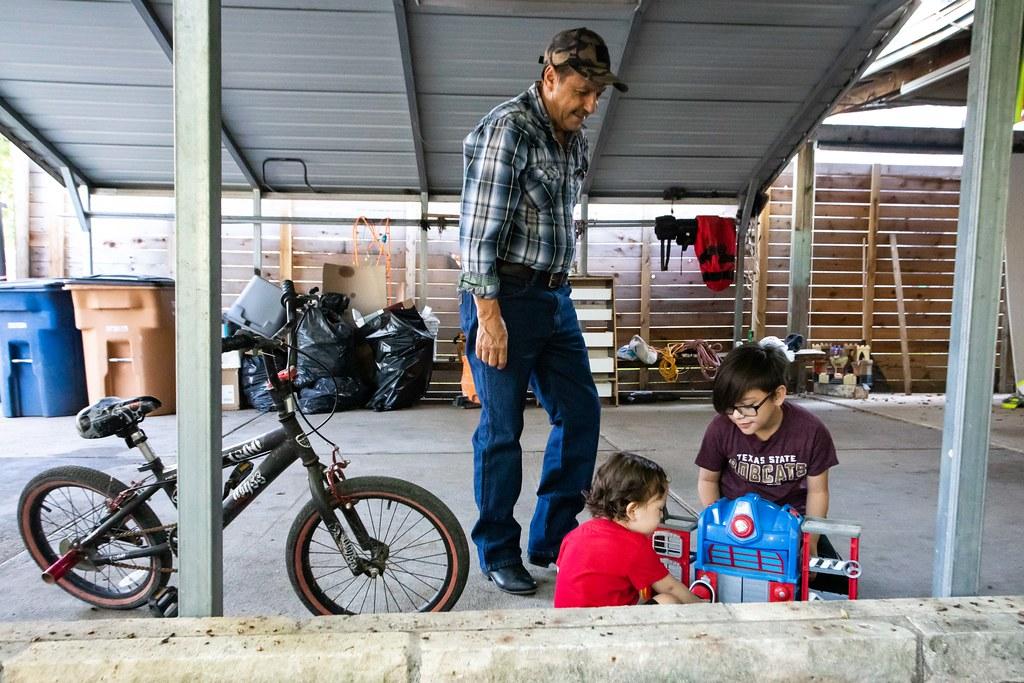From KUT:
Part three of a four-part series.
Back in May, Eligia Rivera was in a parking lot at Webb Middle School, guiding families through a line to pick up groceries. The nonprofit she works for, Austin Voices for Education and Youth, distributes food weekly at schools in Austin.
Since the pandemic began, she said, Austin Voices has seen a bigger need for assistance. She empathizes with these families; the pandemic drastically changed her life, too.
“I encourage them,” she said. “I’m going through it just as much as you are.”
Two Jobs, Zero Child Care
Before the pandemic, Rivera would drop off her 9-year-old son at school every morning, then take her 1-year-old to her aunt’s house in Bastrop. Her older son attended an after-school program, and she would pick them both up after she got off work.
It was a routine that worked – until March, when normal life ceased.
Rivera and her husband had separated at the beginning of the year, and he had moved out of their Montopolis home in March.
Rivera was beginning a new phase as a single mom when schools closed and residents were told to shelter in place. She was nervous to have her aunt or mother watch the children because they were both considered high risk for COVID-19.
Then the emergency stay-home order put her husband out of a job, and she was the only one providing for the boys.
“Even before, I was struggling a little bit,” she said. The jump from one kid to two put a dent in her budget. Then when the pandemic hit and both kids were home all day, her grocery bills soared.
“That’s why I ended up getting the second job,” she said. She fit in shifts at Walmart after work as an administrative assistance with Austin Voices.
Rivera needed to work, but she also needed someone to watch her kids.
Her husband had moved in with his parents, but she didn’t want to send them there, because she didn’t think they were taking the same safety precautions.
“I had to make the tough decision of having him move in, because he was available … so he can watch them and not have the kids exposed,” she said.
As challenging as it was to live with her estranged husband, Rivera realized having him at the house was the easiest solution to the child care puzzle. He offered a consistent routine and could monitor her older son as he finished up the school year online.
But by May, he returned to work, and Rivera again had to figure out who could watch the kids.
New Caregiver, New Routine
Rivera always had family who could help out, so she never had to rely on a child care center. But many of her relatives available to babysit were considered high risk for the coronavirus.
She decided to send the kids to her husband’s mom; it was the best option they had.
But it wasn’t a permanent solution.
Her mother-in-law travels back and forth between Austin and Mexico to see family. She leaves for months at a time, and in May, when she told Rivera she could watch the kids, she was also preparing to leave Austin for the summer.
“It’s a growing concern knowing and stressing out about where I’m going to take my kids next month,” she said.
When her mother-in-law went to Mexico, Rivera’s dad offered to watch the boys on days she distributed food for Austin Voices.















